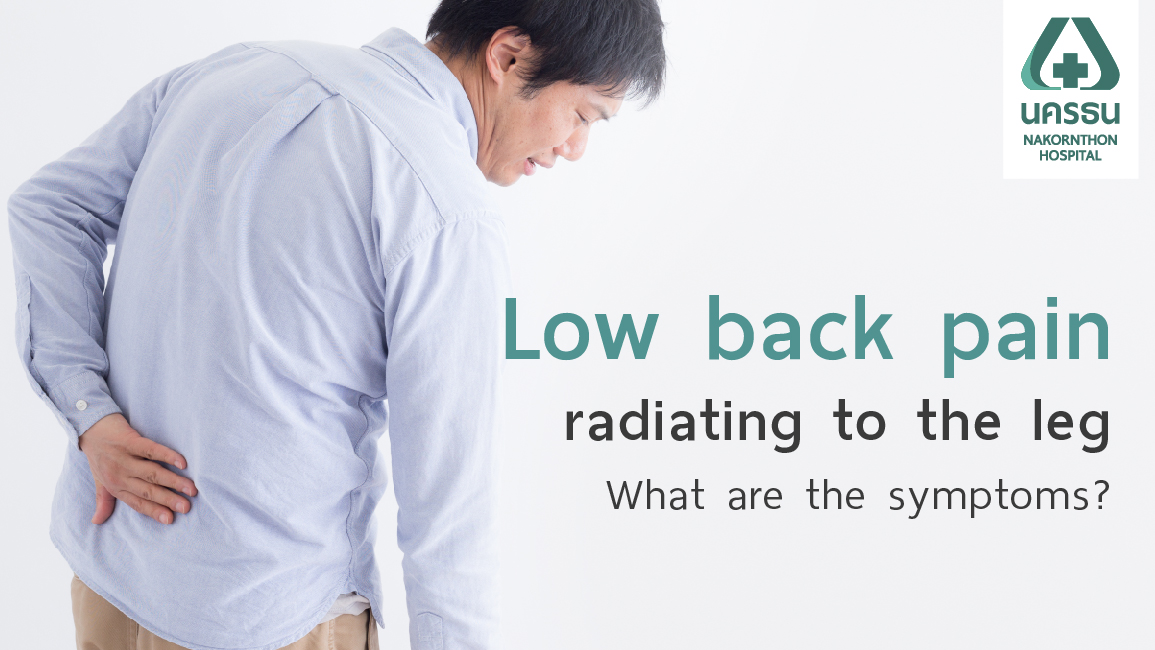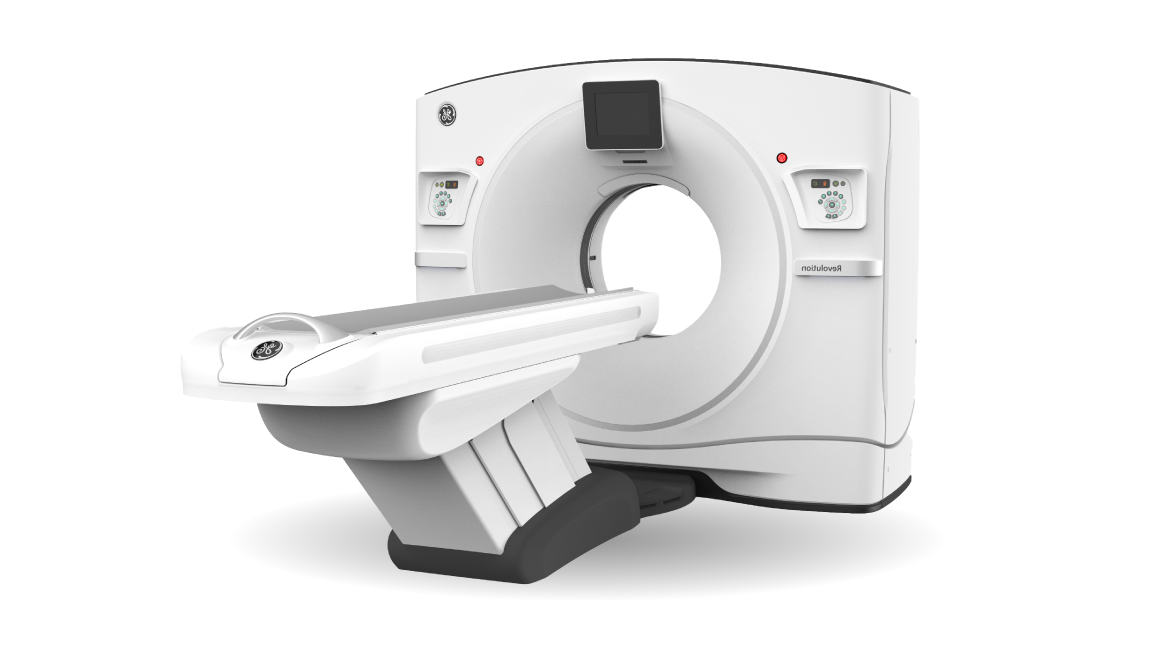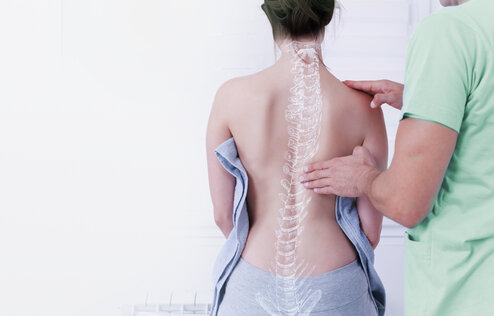Lower Back Pain - Causes, Treatment
Center : Spine Center, Orthopedics Center

Choose to read by topic:
What is Lower Back Pain
Low back pain is one of the most commonly found conditions. The definition of Low Back Pain is, the pain on the lower back with muscle tightness or stiffness; from behind the ribs to the buttocks. Some cases may have a radiating pain to the leg as well. The main drawback of Low Back Pain is to carry on doing activities of daily living. Low Back Pain can be caused by muscle, tendon, bone, or even disc problems. These result in spurring. A spur is a small projection from any structure produced by a normal recovery mechanism. As our bodies age, the spur can cause nerve impingement in the lumbar area and decrease the healing process.
Symptoms of Low Back Pain
- Pain on the lumbar area
- Acute low back pain. It may be so severe that you cannot stand or move for a while.
- The pain may be aggravated by some specific movements: bending or stretching the back. The pain subsides in sitting or supine position.
- Chronic and sore all over the back. It may refer to the buttocks or the posterior side of the thigh. Also, it usually occurs on one side; with an inability to bend the back or stand straight because of pain.
- Other chronic back pain conditions: muscle stiffness; especially when trying to move after staying in prolonged position (sitting or supine position). The movements are also limited, including inability to stand straight.
Lower Back Pain Types
- Acute low back pain, a back pain that persists for less than 6 weeks.
- Subacute low back pain is back pain that persists for more than 6 weeks but not more than 3 months.
- Chronic low back pain is back pain that persists for more than 3 months.
Causes of Lower Back Pain
Most low back pain is caused by a back ailment, the most common of which are:
- Diseases of the ligaments and muscles of the back
- Degenerative diseases of the spinal joints
- Diseases of herniated disc
- Spinal stenosis
- Diseases of the spine
- Infectious spinal disease
- Non-infectious inflammatory disease
- Cancer, which includes cancer of the spine and metastasis of cancer to the spine.
- Accident resulting to spine injury
However, low back pain can be caused by internal organs other than non-spinal disorders, such as kidney disease, coronary artery disease. Digestive system and the reproductive system Including the psychological cause, so if the diagnosis does not find the cause of the back disease Other diagnostic investigations may be considered as a differential diagnosis.
Diseases Associated With Back Pain
- Acute back strain is the most common ailment. Which usually heals by itself in 1-2 weeks, causing the patient to not see a doctor Symptoms present include back pain, with no radiating pain to the leg. This is because the back muscles are stiff and tight, causing the deflection of the back to disappear. When pressing the muscles around the spine, it feels sore. This symptom may occur in conjunction with other symptoms of other acute disease such as herniated discs. or a bone fracture caused by an accident.
- Lumbar disc herniation, found in patients younger than 50 years, is usually acute. After lifting heavy objects or turning the wrong position, causing a herniated disc to rupture over the nerve triggering pain radiating to the legs, numbness and weakness of the muscles may be detected from the L4, L5, S1 nerves, which are common locations.
- Spinal stenosis, back and leg pain in patients, where in there will be gradual symptoms. Sometimes it takes years of pain in the lower back and radiates to the buttocks, thighs, and calves are characterized by: Back pain radiating to the leg and numbness or weakness in the calf when walking long distances. But after just a few minutes of rest, symptoms will improve and can continue to walk for more.
Low Back Pain Diagnosis
Patients with low back pain are does not require radiographic investigation. Especially patients who have recently had symptoms and no severe pain. Each type of radiograph provides information and benefits for low back pain patients, for example:
1. Plain radiograph
A plain radiograph is the first step that should be examined because it is convenient and inexpensive. This will be able to provide enough information Especially about the structure of the spine with various deformities, but cannot see the deformity of the herniated disc, nerves and connective tissue
2. Myelography
Myelography is where a needle is inserted into the spinal cord and injected with a contrast agent. This type of imaging has been replaced by MRI wherein vivid images can be produced.
3. Computer Tomography (CT Scan)
CT scan is used to view bone structure, similar to plain film, but with highly detailed images of each part in different planes to clearly see the pathology of the bone. In addition, images in each plane can be processed to create a three-dimensional figure that rotates on all sides. The disadvantage of a CT scan, is that the connective tissue, including herniated discs, is less sharp than an MRI.
4. Magnetic Resonance Imaging (MRI)
It provides the highest resolution and is able to provide an inward view of the spine in all planes. It can show both herniated discs, muscles, nerves, bones, cerebrospinal fluid, as well as can tell pathologies such as inflammation, pus, blood, etc. Therefore, MRI examination is the best test to find abnormalities and help diagnose the underlying disease Spine area.
Lower Back Pain Treatment
This is because low back pain can be caused by various reasons. Each disease has a specific treatment. This section discusses the overall treatment for low back pain care and referral. Wherein the treatment of low back pain patients has the following objectives.
- Reduce the pain of the patient to regain normal movement and return to daily routines.
- Prevent recurrence of the disease Especially patients caused by unhealthy habits.
Treatment
- Get enough rest. Studies have shown that just a few days of bed rest is more effective than one week-long break.
- When the patient starts to improve, you should move, sit, and stand, avoid bending back during this period, Try wearing a back brace the patient may wear a waistband.
- Pain reliever drugs such as Paracetamol, although short-acting and low-acting, can be used well and safely. Anti-inflammatory drugs Non-steroidal, anti-inflammatory drugs (NSAIDs) can reduce pain and reduces inflammation very well. But have to take into account the side effects as well, which should be used according to the indication depending on the severity of the disease. Age of the patient, underlying disease of the patient, etc.
- Sending patients to physical therapy. It can reduce acute pain. There are many physical procedures to reduce pain such as ultrasound, short wave, TENS, electro-acupuncture, traction, and manipulation, etc.
- Educating patients about walking, standing. Practicing correct posture can prevent recurrence of back pain, 80-90 percent can be cured with compression therapy, medication and physical therapy, but if supportive treatment does not disappear, further treartment may be considered.
How to Prevent Back Pain
We can prevent Low Back Pain and other spine disorders by avoiding risk factors such as:
- Avoid sitting in the same position for a long period of time, especially sitting in front of the computer. Also, avoid sitting or maintaining the incorrect postures while doing activities daily.
- Avoid carrying heavy bags or shoulder bag on one side since it causes a body imbalance, resulting in low back pain.
- Exercise with precaution, especially the repetitive exercises such as running, football, basketball, or sports that have to twist or pivot the body: golf, badminton, tennis. It also includes weight lifting since it can cause both acute and chronic low back pain.
- Exercise back muscles.
Conclusion
Low back pain is the most common spine disorder. The pain can occur due to back muscles, discs, or even spinal joints problems. The pain also occurs at the back radiating to the buttocks. In case the pain becomes chronic, severe and referred to the leg or the foot with searing pain, making it difficult to stand or walk, these symptoms may not be just a common low back pain. These symptoms can be warning signs indicating other abnormalities or disorders. So, it is important that patients see a doctor to get a diagnosis and treatment.
Online Consultation
Article of Spine Center, Orthopedics Center
High-Speed CT scan 443 Slices: Precision, Speed, and Reduced Radiation Exposure





